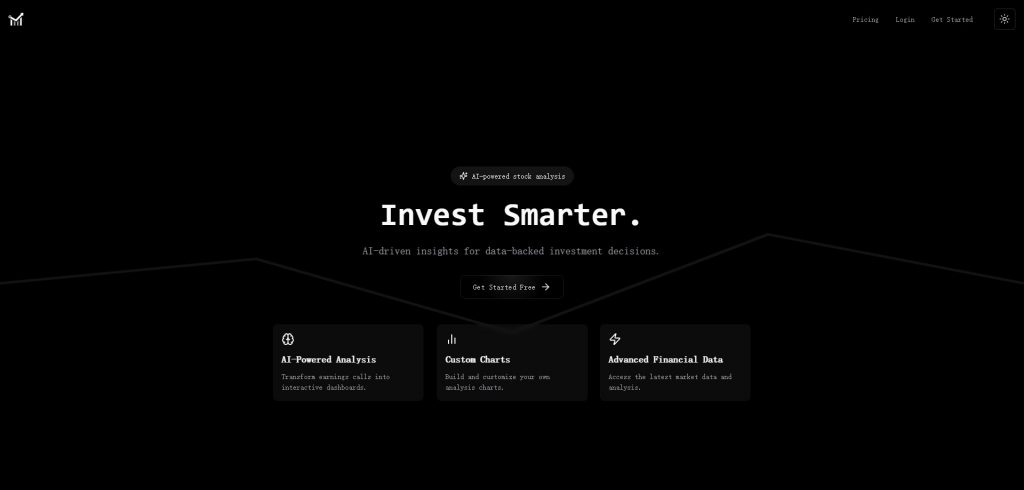20 Great Suggestions For Choosing Free Ai Tool For Stock Market India Sites
20 Great Suggestions For Choosing Free Ai Tool For Stock Market India Sites
Blog Article
Top 10 Ways To Evaluate The User Experience And Interface Of Ai Platforms For Trading Stocks
The User Interfaces (UI) and the User Experiences of AI-powered stock trading platforms are essential to their efficiency, usability, overall satisfaction, and success. Poorly designed interfaces can hinder the process of making decisions, even when AI models that underlie it are robust. Here are 10 ways on how to evaluate the UI/UX.
1. The user's ease of use as well as the user-friendlyness of the product are assessed
Navigation: Ensure the platform is easy to navigate using clearly defined menus, buttons and workflows.
Learning curve - Assess the speed with which users pick up the platform and comprehend the platform without a lot of training.
Consistency: Check for consistent designs (e.g. buttons, designs or colors, etc.)) across the platform.
2. Check for Customizability
Dashboard customization - Make sure that users can customize dashboards using relevant charts, metrics and information.
Layout flexibility: Ensure the platform allows you to change the layout of widgets, charts and tables.
Look up the platform's dark/light options, or your visual preferences.
3. Visualize data easily
Quality of the chart - Make sure that the website has interactive charts with high resolution (e.g. candles and line charts) and includes zooming, panning, and other features.
Visual clarity - Examine to ensure that data is clearly displayed, using the appropriate tools, labels or legends.
Real-time updates: Check if the visuals are automatically updated to reflect changes on the market.
4. Test Speed and Response
Time to load: Ensure that your platform loads quickly, even if you are handling large datasets.
Real-time performance: Find out whether your application can handle data feeds that are updated in real-time without lags or delays.
Cross-device compatibility: Make sure to determine if your device is compatible with every device (desktops and mobiles as well as tablets).
5. Examine accessibility
Mobile app availability: Check whether the platform provides an app for mobile devices that has all the features needed for trading on the go.
Keyboard shortcuts: Make sure the platform supports keyboard shortcuts for advanced users.
Accessibility features - Check that the platform is in compliance with accessibility standards.
6. Test Search and Filter functionality
Search functionality Users should be able to easily search for stocks or indices.
Advanced filters: Check if the user can apply filters to narrow results (e.g. by sector, capitalization, or performance metrics).
Saved searches: Check whether the platform permits users to save frequently used searches or filters.
7. Make sure you are aware of alerts and other notifications.
Customizable notifications: Users can create specific alerts that can be tailored to specific conditions.
Notifications delivery: Determine if alerts can be delivered via different channels (e.g. SMS, email, app notifications).
Timeliness - Check whether alerts are sent out quickly and precisely.
8. Evaluation of Integration with Other Tools
Integration of brokers is crucial to ensure a smooth execution of trades.
API access: Check if the platform offers API access for advanced users to develop custom tools or workflows.
Third-party integrations : Find out whether the platform supports integration with other tools, such as Excel, Google Sheets or trading bots.
9. Review the Help and Support Features
Onboarding tutorials Check if new users can access tutorials.
Help center: Ensure that the platform is equipped with a complete help center or knowledge base.
Customer support: Determine if you can get a quick response from the website (e.g. via live chat, via email, or by phone).
10. Test to determine if Overall User Satisfaction is met
User feedback Research and testimonies to assess user satisfaction.
Trial period: You can make use of a demo or a no-cost trial to test the platform and determine its usability.
Error handling: Verify how the platform deals with edge cases or error (e.g. insufficient inputs, downtime of servers).
Bonus Tips
Aesthetics. While functional design is crucial but a visually appealing design can improve user experience.
Performance under pressure: Ensure that your platform is stable and responsive in conditions of high market volatility.
Forums and community: Find out if the platform offers a community or forum for users to discuss tips and feedback.
The following tips can aid you in evaluating the UI/UX of an AI stock-predicting/analyzing trading platform and ensure that they are user friendly efficient and in tune with your needs in trading. A great UI/UX will enhance the ability of you to make educated decisions, and to execute trades efficiently. Read the recommended stock market software for more info including chart ai for trading, best ai trading app, ai stock price prediction, ai stocks, best ai trading software, ai for trading, ai for investing, investment ai, ai trade, ai for investing and more.
Top 10 Tips For Evaluating The Social And Community Capabilities Of Ai Stock Trading Platforms
It is crucial to know how users interact, share insights and learn from each other through analyzing the community and social features of AI-driven prediction platforms and trading platforms. These features can greatly enhance the user experience and provide important support. Here are 10 top suggestions for assessing the community and social aspects of such platforms.
1. Active User Community
Tips - Make sure the platform has a base of users who are active in participating in regular discussions, sharing insights, and providing feedback.
Why: A community that is vibrant is a place where users can develop and share knowledge.
2. Discussion Forums and Boards
Examine the activity and quality of message boards or discussion forums.
Why: Forums allow users to ask questions, share strategies and debate market trends.
3. Social Media Integration
Tip: Assess whether the platform works with social media channels (e.g., Twitter, LinkedIn) for sharing information and information.
Why: The integration of social media with other platforms can boost the level of engagement and also provide market updates in real-time.
4. User-Generated Content
Search for tools that allow you publish and share material such as articles, blogs or trading strategies.
Why: Content created by users creates a community and gives a different view.
5. Expert Contributions
Tip: Find out for contributions from experts from the industry, such as AI specialists or market analysts.
Expert opinion adds the depth and credibility of community discussions.
6. Real-Time Chat and Messaging
Tips: Examine the possibility of live chat or messaging services to allow instant messaging between users.
Reason: Real-time interaction facilitates quick sharing of information and collaboration.
7. Community Moderation Assistance
Tips: Assess the amount of support and moderating offered by the community.
What is the reason? Moderation that is effective helps to create a positive and respectful environment. Help is readily always available to help resolve problems quickly.
8. Webinars and Events
Tips: Find out whether the platform is hosting events, webinars, or live Q&A sessions with experts.
What's the reason? These events are great opportunities to get educated about the field and to have direct contact with professionals.
9. User Feedback and Reviews
Tips - Search for features where users are able to give feedback to the platform the community, features and other aspects.
Why: User input helps determine strengths and areas for improvement.
10. Gamification and Rewards
Tips. Find out if the platform provides gamification elements (e.g. leaderboards, leaderboards or badges) and incentives for engagement.
Why: Gamification can motivate users to be more engaged with the community and platform.
Bonus Tip Tips for Privacy and Security
Make sure you use strong privacy measures and security in the social and community features. This will help protect your personal information and data.
By evaluating these factors and analyzing these variables, you can determine whether an AI-based stock forecasting and trading system offers a positive community that will improve the experience of trading. Take a look at the best what do you think for blog tips including best ai stock trading bot free, chart ai for trading, ai trading tools, invest ai, best ai stock, trading chart ai, chart analysis ai, stock analysis app, canadian ai stocks, ai investment platform and more.